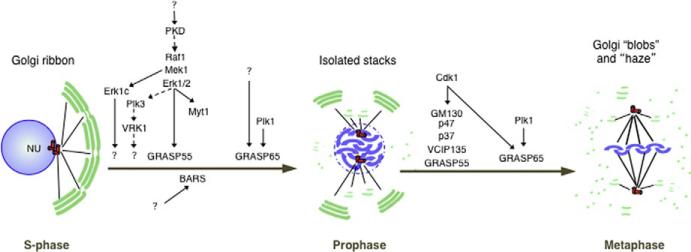FIGURE 23.1.
The fragmentation of the Golgi ribbon during mitosis is tightly controlled. Schematic representation of the mechanisms leading to breakdown of the Golgi complex in mitosis. The mammalian Golgi complex in S-phase forms a ribbon next to the centrosome (red cylinders) and the nucleus (NU). In G2, BARS, MEK1, the GRASPs, and Plk1 activities are required to convert this interconnected ribbon into isolated stacks. This step is necessary and sufficient for entry into mitosis (prophase). In prophase, the isolated Golgi stacks undergo further disassembly into the Golgi “blobs” and “haze” through Plk1 and Cdk1-mediated phosphorylation of golgins (GM130), and components of the fusion machinery (p47, p37, and VCIP135). The relative fraction of Golgi membranes dispersed as “blobs” or “haze” is cell type specific.

